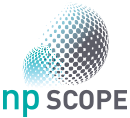Nanomaterials have become present in our daily life, they could be found in food, cosmetics, textiles, paints, electronic devices, etc. The Consumer Product Inventory (CPI) lists nearly 2000 consumer products which contain such nanomaterials (from over 700 companies in more than 30 countries). Metallic and metal-oxide particles are the most abundant group (about 650 products) with silver, titanium, zinc and gold the most widely used materials.
The current trend in nanotechnology is the modification of materials so that they present specific desired properties for the use in different industrial sectors and to serve different purposes. However, the same properties that make nanomaterials desirable in these various applications have the potential to alter biological properties, generating a new material, with potential unknown health risks for humans, the environment and safety. Therefore, it is very important to develop instruments and methodologies for adequate physico-chemical characterisation of nanomaterials.
Nanoparticle characterisation needs can be classified according to the three key questions:
- What does the nanomaterial look like?
- What is the nanomaterial made of?
- What factors affect how the nanomaterial interacts?
To address these questions, a number of techniques are currently being used, however until today, this multi-technique approach has been performed on separate, expensive, instruments. The project aims at developing ONE SINGLE instrument that will provide the answers to ALL of the three key questions .


